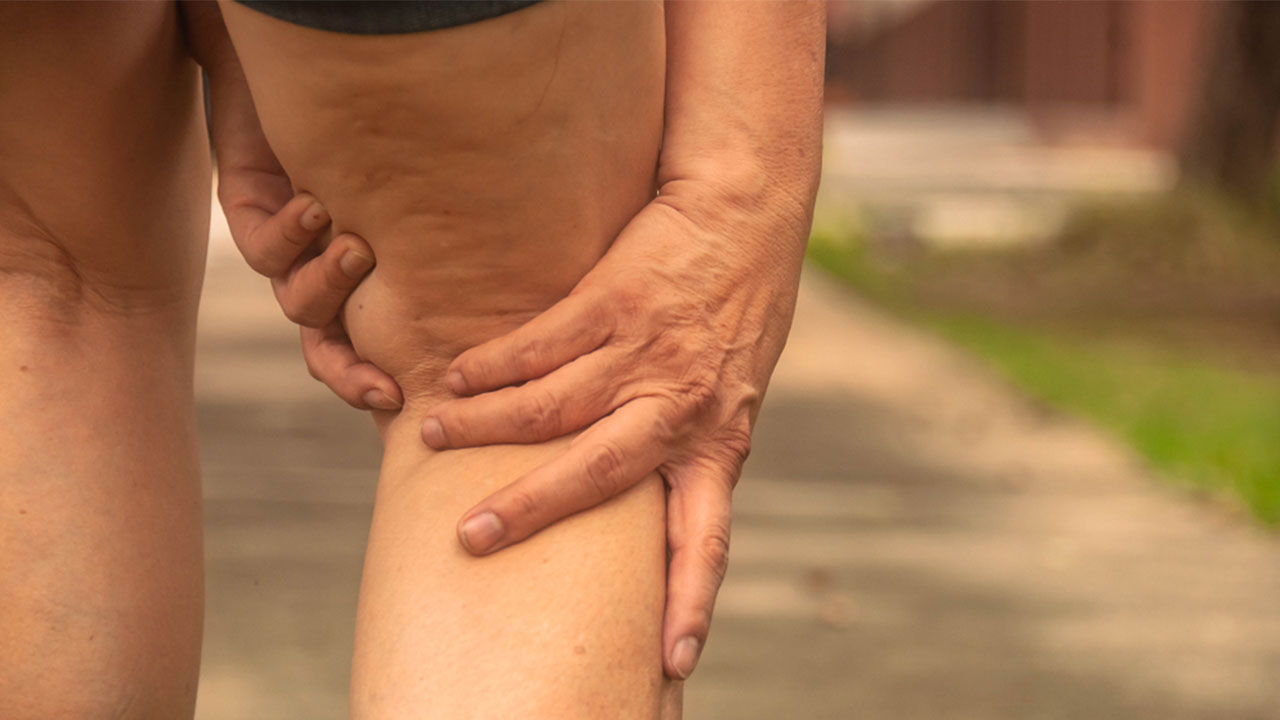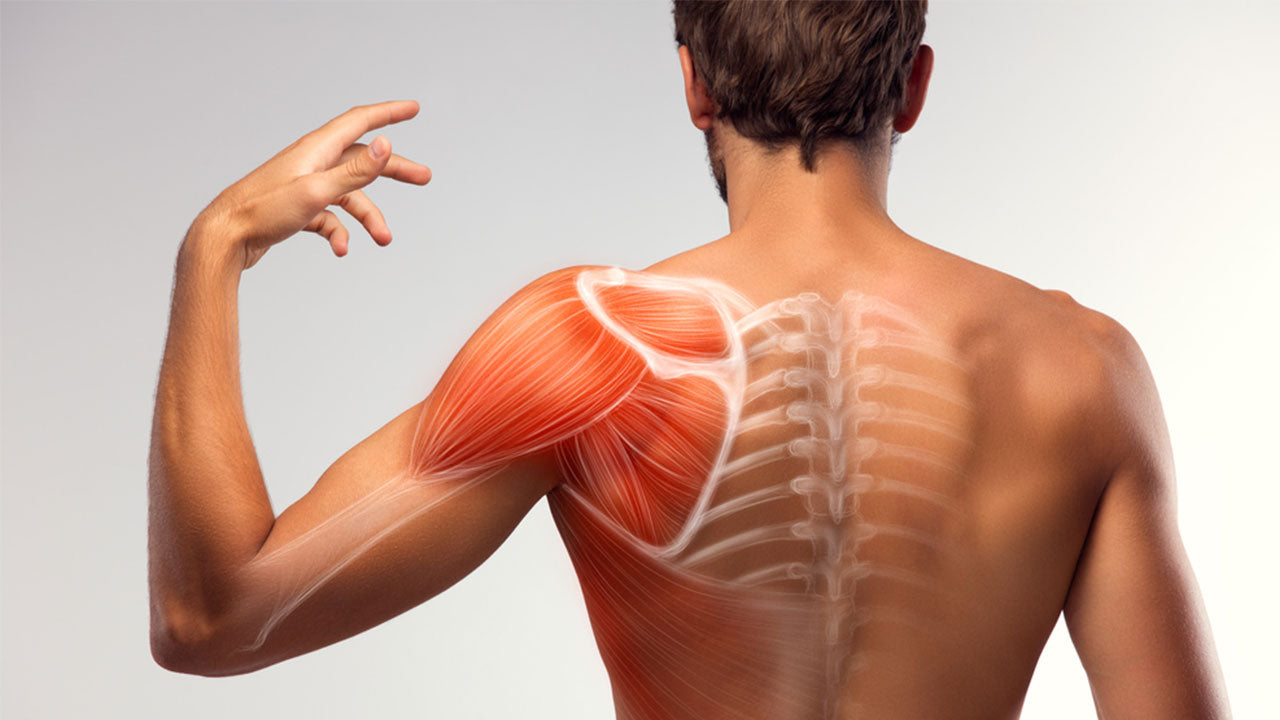Pain Behind Knee When Walking: Top 10 Possible Underlying Causes
 By: by Amino Science
By: by Amino Science

Pain is how your body communicates with you. A pain in your head might mean you're dehydrated, pain when touching a hot stove lets you know that's a bad idea, and pain in your joints could be an indication of injury or arthritis. But what does pain behind your knee when walking mean? This article details potential conditions that could be causing this leg pain so you can address the issue before it becomes chronic and debilitating.
Understanding the Knee
Severe pain behind your knee when walking is not uncommon. Known as posterior knee pain, aches around the knee are a common complaint fielded by doctors.
One of the biggest joints in your body, the knee joint is also one of the most complex and load-bearing joints, tasked with keeping the body upright as you stand and walk.
Your knee is vulnerable to many types of abuse, from arthritis to injury in any one of its many moving parts—the kneecap (patella), the thigh bone (femur), the shin bone (tibia), and the various muscles, tendons, cartilage, and ligaments that come together at the knee joint. Damage anywhere could spread or worsen, which is why knee pain needs to be identified and addressed as soon as possible to avoid any interruption to your mobility.
Let's first explore what the pain behind your knee could mean, and then figure out how to remedy it.

Top 10 Possible Causes of Pain Behind the Knee When Walking
Pain behind your knee could be accompanied by swelling, visible lumpiness, or a locking sensation. Any accompanying symptom could help you determine the cause of this pain, so investigate your knee thoroughly, or better yet seek an examination from a medical professional, because some of the issues that may be causing your knee pain are quite serious. Let's take a look at the most common causes of posterior knee pain.
1. Leg Cramp
You may well know the pain caused by a charley horse in your calf, but your other leg muscles can also experience cramps, including those on the back of the thigh. Cramps occur when your muscles tighten independently of your control, and can be caused by nutrient deficiency, dehydration, nerve problems, toxicity, or liver disease. Many women experience leg cramps during pregnancy, and even more people cramp up during exercise.
Muscle spasms usually don't last very long, but the pain they cause can linger for hours or sometimes days. If you suspect a cramp is behind your leg pain, warm or massage the area to help it heal, but be sure to monitor it: if the pain doesn't lessen and ultimately subside soon, consult a trusted health care professional.
2. Baker's Cyst
A baker's cyst, otherwise known as a popliteal cyst, is a fluid-filled pocket under the skin behind the knee. The fluid in this cyst is synovial fluid, which exists to help lubricate your joints and keep them working smoothly. However, too much synovial fluid in the area could build up into a cyst.
Symptoms of a baker's cyst (along with pain) are palpable swelling, stiffness, or trouble flexing the joint. If the cyst bursts you'll notice a very sharp pain in the area, which is why it's recommended you seek professional assistance in identifying and draining the cyst before that occurs.
3. Jumper's Knee
Jumper's knee is the common name for patellar tendonitis, aka tendonitis of the knee. The tendon that connects your kneecap to your shin bone is susceptible to knee injuries from jumping, and is often treated in sports medicine, as it's very likely to occur in those who play basketball, volleyball, and other sports that involve jumping.
Other symptoms of jumper's knee besides pain below your kneecap could be stiffness, weakness in the joint, or difficulty straightening or bending the knee. Proper rest may be all that is required to heal this injury, but if it persists, you may want to consult a doctor to rule out other contributing factors.
4. Calf Strain
Calf strain, or gastrocnemius tendonitis, is tendonitis that affects the gastrocnemius (calf) muscle, which is, obviously, located at the back of the lower leg. Sports like squash or tennis that involve quickly switching from standing to running can cause calf strain, and the pain of this injury may be accompanied by visible calf bruising, swelling, or trouble standing up on your tiptoes depending on the severity. Use the RICE technique (rest, ice, compress, elevate) to help this injury heal as quickly as possible.
5. Arthritis
Arthritis is a degenerative joint disease that involves a gradual wearing away of the cartilage that cushions the bones of your leg. Without cartilage, the bones start to grind against each other, causing long-lasting damage and pain. Cartilage cannot regenerate, so medical assistance is required to prevent a worsening of the condition.
Different types of arthritis that could afflict the knee joint include autoimmune diseases such as rheumatoid arthritis, lupus, psoriatic arthritis (which also comes with scaly skin patches), and osteoarthritis. Treatment options include steroid injections, specific exercises, drugs targeting the immune system, or surgery. Seek medical advice to learn which is most appropriate for your circumstances.
6. Runner's Knee
Runner's knee, also called chondromalacia, is another joint pain issue involving cartilage breakdown, and can come about as a result of injury, overuse, arthritis, or aging. Pain behind the knee when walking occurs when your leg bones rub together without the protective divide of cartilage between them. The pain may manifest as a dull ache, and it may also worsen when climbing stairs. You may notice a grinding sensation when you walk as well.
7. Meniscus Tear
A meniscus tear is an injury to one of the two menisci that each knee has. A meniscus tear can happen suddenly, or gradually develop as the meniscus starts to wear down. Athletes often injure their menisci, and you may notice a popping sound or sensation at the moment of injury, followed by pain, swelling, weakness, stiffness, or a giving or locking feeling in the joint.
8. Deep Vein Thrombosis
Deep vein thrombosis (DVT) is a blood clot in the leg that causes pain, particularly when you stand up. DVT is incredibly dangerous, as a "thrown" clot that breaks off and travels through the body could result in a pulmonary embolism and possible death.
Other symptoms of a blood clot include leg swelling, a warming sensation in the area, and reddened skin. Seek medical advice as soon as possible if you suspect deep vein thrombosis.
9. Hamstring Injuries
Hamstring tendonitis and hamstring sprain are two injuries that could affect one of the three hamstring muscles located at the back of your thigh (the biceps femoris muscle, semitendinosus muscle, and semimembranosus muscle). These muscles allow your knees to bend, and an injury there could manifest as pain at the back of the knee. It may also involve swelling, bruising, or noticeable weakness at the back of the leg. Hamstring injuries are common among athletes who compete in fast sports like track, tennis, basketball, and soccer.
10. Ligament Injury
The knee ligaments that attach your thigh bone to your shin bone include the anterior cruciate ligament (ACL), the posterior cruciate ligament (PCL), the medial collateral ligament (MCL), and the lateral collateral ligament (LCL). PCL injuries are most often caused by car accidents, and ACL injuries are the most common overall as it is the ligament that crosses diagonally through the knees and keeps your shin bones from sliding up in front of your thigh bones. A ligament tear could cause knee-area pain when walking and may require surgery to repair.
Knee Pain Diagnosis
It is important to seek medical attention for many of these conditions. A doctor may utilize X-rays or an MRI to assess whether your pain is due to bone or soft tissue injury, and may also recommend treatment options spanning from over-the-counter nonsteroidal anti-inflammatory drugs (like ibuprofen) to surgery and physical therapy. Take care of your joints with natural joint health supplements, and be sure to help them heal when they're injured with both rest and nutritional therapeutics, because an untreated joint injury could permanently limit your range of motion and disrupt the enjoyment of your life.

Up to 25% off Amino
Shop NowTAGS: conditions
Join the Community
Comments (0)
Most Craveable Recipes




 833-264-6620
833-264-6620



















